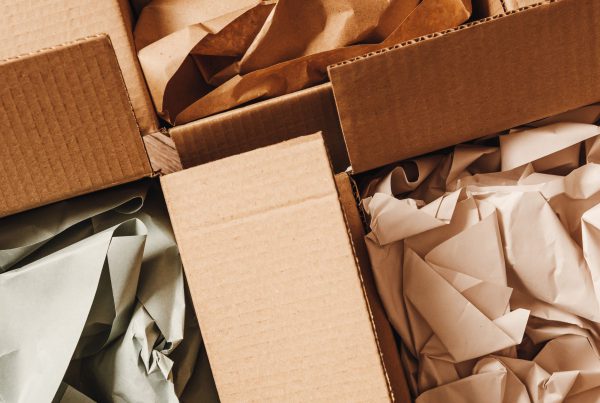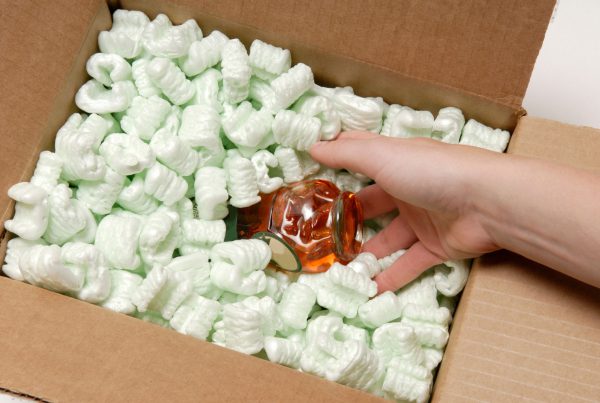Did you know that over 95% of product shipments in the United States use a corrugated box? That’s a huge number, right? It just goes to show how critical these boxes are for keeping your goods safe during shipping. Picking the right strength for your boxes isn’t just a nice-to-have—it’s essential to make sure your products arrive in one piece.
Not every corrugated box is created equal. You need to consider your product’s weight, its delicacy, and the shipping journey it’ll face. This guide is here to walk you through what makes a solid corrugated box. We’ll dive into how to choose one that’s tough enough to protect your items without breaking the bank.
Key Takeaways
- Over 95% of shipments in the U.S. rely on corrugated packaging.
- Choosing the right box strength keeps your products safe during transit.
- Factors such as weight and fragility play a significant role in box selection.
- Understanding box types leads to smarter decisions.
- Balancing strength and cost is crucial for efficiency.
- Different shipping methods may require varying box strengths.
Understanding Corrugated Shipping Boxes
When it’s time to ship your products, choosing the right packaging is everything. A corrugated cardboard box stands out because it’s built to be strong and protective during shipping.
Composition of Corrugated Boxes
Corrugated boxes are made with layers of paper. The middle layer is fluted, sandwiched between two flat sheets. This setup makes them lightweight yet incredibly sturdy. Honestly, it’s quite ingenious how this design enhances durability while remaining easy to store and ship. These boxes are ideal for items that require a little extra care during transit.
Difference between Cardboard Boxes and Corrugated Boxes
Many people confuse corrugated boxes with regular cardboard boxes. Both are solid choices for packaging, but they’re not the same. Cardboard boxes typically have one or two layers of paperboard, which means they don’t offer the same level of protection as corrugated ones. If you’re shipping fragile items, go for corrugated boxes—they’re better at handling impacts and moisture, ensuring your products stay safe.
How is Corrugated Box Strength Measured?
Understanding the strength of your cardboard packaging is crucial to ensuring your products remain secure during shipping. Two main tests help measure this: the Edge Crush Test (ECT) and the Mullen Test. Each focuses on different aspects of box strength, providing you with the information you need to select the right shipping materials.
Edge Crush Test (ECT) Explained
The Edge Crush Test checks how well a corrugated box can handle vertical pressure without buckling. This is super important for boxes that’ll be stacked during transport. The ECT rating helps you choose a box strength that suits your needs, making shipping safer and reducing the risk of damaged goods.
Bursting Strength: Mullen Test
The Mullen Test measures the pressure the corrugated material can withstand before it bursts. It applies force until the box gives out. Knowing these results helps you pick boxes that can withstand various stresses during shipping, keeping your items secure.
| Test Type | What It Measures | Importance |
| Edge Crush Test (ECT) | Vertical pressure resistance | Crucial for stacking boxes during shipping |
| Mullen Test | Bursting strength of material | Ensures boxes withstand various stresses |
Importance of Choosing the Right Strength
Picking the right strength for your corrugated shipping boxes is a game-changer for protecting your products. With numerous options available, understanding why box strength matters is crucial. It ensures your items arrive safely, reducing damage risks.
A well-chosen box doesn’t just secure your products—it boosts customer satisfaction by delivering items in pristine condition. Who doesn’t love a happy customer, right?
Protecting Your Products During Transit
Corrugated shipping boxes are designed to shield products on their journey. The right box strength can absorb shocks and impacts, preventing breakage. This is especially crucial for fragile items, such as electronics or glassware. Protecting your products from the get-go saves you time and money by avoiding returns or replacements due to shipping mishaps.
Balancing Strength and Shipping Costs
Box strength is crucial, but you don’t want it to eat up your budget. Stronger boxes can be more expensive, depending on their weight and size. You’ve got to weigh your product’s needs against your shipping costs. Finding that sweet spot lets you choose a cardboard carton box that protects well without breaking the bank, keeping your business competitive.
Types of Corrugated Shipping Boxes
Corrugated shipping boxes come in various types to suit different needs. Choosing the right one ensures your items arrive safe and sound. Understanding the differences between single, double, and triple wall boxes enables you to make an informed choice based on your specific shipping requirements.
Single Wall Boxes
Single-wall boxes are ideal for lightweight items or those that don’t need heavy-duty protection. They have one layer of corrugated material, offering a great balance of strength and affordability. These are perfect for books, promotional items, or non-fragile goods, keeping your shipments secure without overspending.
Double Wall and Triple Wall Options
Double-wall boxes provide extra strength for heavier or more delicate items. With two layers of corrugated material, they’re more durable and can handle more weight. Triple wall boxes offer the ultimate protection, ideal for very heavy or fragile goods. While less common, they’re a must for industries that need top-tier protection.
| Type of Box | Layers | Best For | Strength |
| Single Wall Boxes | 1 | Lightweight items | Good |
| Double Wall Boxes | 2 | Medium-weight items | Better |
| Triple Wall Boxes | 3 | Heavy or fragile items | Best |
Factors to Consider When Selecting Box Strength
Choosing the right box strength is all about understanding your needs. Start with your product’s weight and fragility—these are big factors in determining the box strength required for safe delivery. The shipping method also plays a huge role, as different handling processes can impact your packaging. And don’t overlook environmental factors like temperature swings or humidity—they can also affect your choice.
Product Weight and Fragility
Your product’s weight is a major player. Heavier items need sturdier boxes to avoid damage. Fragile items, such as glassware, require extra care, so opt for robust packaging to avoid costly returns. A solid cardboard box can make all the difference.
Shipping Methods and Temperatures
How you ship your items matters. International shipping, for example, involves rough handling and changing weather conditions. You’ll need boxes that can withstand those challenges. Temperature swings can weaken boxes, so consider your logistics carefully to select the right strength.
Which Corrugated Shipping Boxes Should You Use?
Selecting the right corrugated shipping boxes is crucial for effective packaging. Consider what you’re shipping when making your choice. Single-wall boxes are great for lightweight, non-fragile items.
But if you’re shipping something delicate or high-value, double or triple-walled boxes are the way to go—they offer more protection and strength. Understanding your products and delivery conditions helps you pick the best boxes for the job.
Conclusion
Choosing the right box strength for your corrugated shipping boxes is crucial. It directly impacts the safety of your products during transit. Knowing how to measure box strength enables you to make more informed decisions about packaging.
When shipping, aim for that perfect balance between strength and cost. Continue to evaluate your packaging choices as your business expands. Ensuring your products arrive safely is the key to keeping customers happy and loyal to your brand.
About The Boxery
At The Boxery, we’re all about delivering top-notch packaging solutions. We offer a wide range of corrugated shipping boxes tailored to different products, so you’ll always find the perfect fit.
We understand the importance of box strength and durability. That’s why The Boxery is here to help you choose the proper packaging. Our goal is to protect your items while keeping costs under control, striking the ideal balance between quality and affordability.
Choose The Boxery for your packaging needs. We’re committed to providing the best corrugated shipping boxes, ensuring your products arrive safely and in excellent condition. Your needs—and the safety of your items—come first.
FAQ
What are corrugated boxes used for?
Corrugated boxes are ideal for shipping and packaging a wide range of items. Their strength and durability make them perfect for protecting both lightweight and heavy products during transit.
How do I choose the right strength for my corrugated boxes?
Consider the weight, fragility, shipping method, and potential weather conditions of your item. These factors help you select a box strength that offers protection while keeping costs down.
What is the difference between cardboard boxes and corrugated boxes?
Corrugated boxes have multiple layers of paper, making them stronger and more durable than cardboard boxes, which typically have fewer layers and offer less protection.
What tests measure corrugated box strength?
The Edge Crush Test (ECT) and the Bursting Strength Test (Mullen Test) evaluate box strength. They assess how well boxes handle pressure and keep items safe during shipping.
Why is it important to choose the right strength for my packaging?
The right box strength prevents damage during transit and saves money by avoiding oversized or overly expensive boxes.
What types of corrugated boxes are available?
You’ll find single-wall, double-wall, and triple-wall corrugated boxes. Each provides different levels of protection for various item weights and fragilities.
How do shipping methods affect the choice of box strength?
Long-distance or international shipping requires stronger boxes due to increased handling and exposure to harsh weather conditions.
Can I use corrugated boxes for fragile items?
Absolutely! Corrugated boxes, especially those with double or triple walls, are excellent for fragile items, providing the necessary cushioning and strength for safe transit.
What impact do environmental factors have on corrugated box strength?
Weather conditions, such as temperature and humidity, can weaken boxes. Choosing the right box strength is even more critical when shipping in varying climates.





Recent Comments